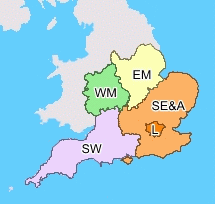
Information for disabled travellers
This page contains links that may help you get extra information and help to enable you to plan a journey around a particular disability.
What do the symbols on this site mean?
If you use the journey planner you will probably be offered options that include bus travel. There are 3 symbols used which show the level of accessibility that you can normally expect on that bus route.
| the service is operated by a bus without any special accessibility and therefore may have step access. | |
| the service has been identified as normally operated by a low floor bus with no entrance step. However it may not have a space for a wheelchair, and doesn't have a wheelchair ramp | |
| the service has been identified as normally operated with a wheelchair accessible bus which has a ramp and an official space for a wheelchair. |
Taking wheelchairs on buses.
The information about wheelchair-accessible buses being used has been supplied by bus operators and local councils. However as new buses are introduced you may feel there are other routes that traveline should know about. If so please use the 'Feedback' button to tell us.
Types of wheelchairs
All new buses are required to be able to carry wheelchairs but wheelchairs come in a huge variety of shapes and sizes. Whilst you should expect a standard manual or electric chair to be able to travel by a wheelchair accessible bus it may not be possible to carry a scooter. The officially recognised dimensions for wheelchairs are :
- No more than 700mm wide
- No more than 1200mm long
- No more than 1350mm high from floor level to the top of the head of the person seated in the wheelchair.
Toilets for disabled travellers
Click the link to http://www.directenquiries.com/ where you can find the location of accessible toilets anywhere in the country.
Availability of staff to assist disabled travellers
Staff assistance is available at many rail stations; for detail click the link to see the National Rail stations database. Here you can check if staff are available to help, and the extent of facilities available at each station for disabled travellers.
There's a section on the national rail website provides train travel information for disabled travellers. And there is information for disabled travellers using National Express coaches on their website. Other operators may also provide specific advice on their websites - click on the contact details button on our web pages to find the web-site address of an operator.
It is not normally possible to provide assistance between buses and stations unless you use a specialised assistance bus service such as Dial-a Ride. Details of contacts for dial a ride can be found by clicking on the contact details button on our web pages and entering the name of the local council, eg: Reading Borough Council or Kent County Council.
Taxi info
Click the link to the traintaxi datatabase which gives details of accessible taxi operators serving the area around each station.
More help and advice
Local authorities can give advice to disabled travellers regarding specific facilities in their areas. Click on the contact details button on our web pages.
Click the link to go to the 'Disabled Persons Transport Advisory Committee' guide called "Door to Door: a travel guide for disabled people".
Click the link for the Department for Transport's publication "Wheels within wheels - a guide to using a wheelchair on public transport".
A wide range of information for those with disabilities, including some transport-related information, is also available at the national disabledgo web site.




